Overview
Our sharpening service will provide a good serviceable edge on the blade. The result is typically “very sharp” with a small secondary bevel and a bit of an “apple seed” profile. The resulting edge is somewhat dependent on the particular blade. Some blades will take and hold sharper edges than others and the thickness of the blade will determine how wide the bevel will need to be. We adjust the angle of the edge to suit the specific blade and attempt to get as close to a bevel-less edge as possible without marring the surface of the blade.
The Sharpening Process
The sharpening service is done with a belt sander. The process involves many passes with sanding belts of various grits. The blades are rested between passes to prevent them from becoming hot and damaging their temper. By default we will sharpen as much of the blade as possible including any false edges if appropriate. If you have a different preference, feel free to make that request in the special instructions at check out. We can sharpen only the last half or third of an edge, for example. Our sword sharpening expert has personally sharpened several thousand swords at this point, so will provide you with a professional service.
What the Service is Not
The resulting edge will be “sword sharp” not razor sharp. Our goal is to provide you with a usable edge for cutting practice that will hold up to some use and not require constant re-sharpening. In other words, we intend to provide you with a serviceable weapon, not a personal grooming implement. The service will not provide a completely bevel-less edge. To create that type of edge will necessarily scratch up the blade surface and we lack the machinery and time to provide a full re-polishing of a blade’s surface. A service of that nature would be significantly more expensive as a great deal more time would be required. We do not offer this type of service at this time.
Disclaimer
We make no guarantee that the resulting edge will meet with your expectations. Every blade is different and some will take and hold a sharper edge than others, due to the blade material, heat treatment or geometry. Some customers can also have incorrect assumptions about sword sharpness and improper expectations as a result. All we can say for sure is that the resulting edge will be sharper than the default edge, in most cases, significantly so. We can not provide any refunds for the service once it has been completed, so consider it to be provided “as is”. That being said, if you are unhappy with the product for any reason, we do still allow you to return the item for a full refund, including the sharpening costs under our normal return policy. This does not apply to special sharpening requests, for example if we sharpen something specially for you that does not normally list that option on our site. The vast majority of our customers are happy with the results of the service, so as long as you keep the above mentioned in mind, we are confident you will be pleased with the results as well.

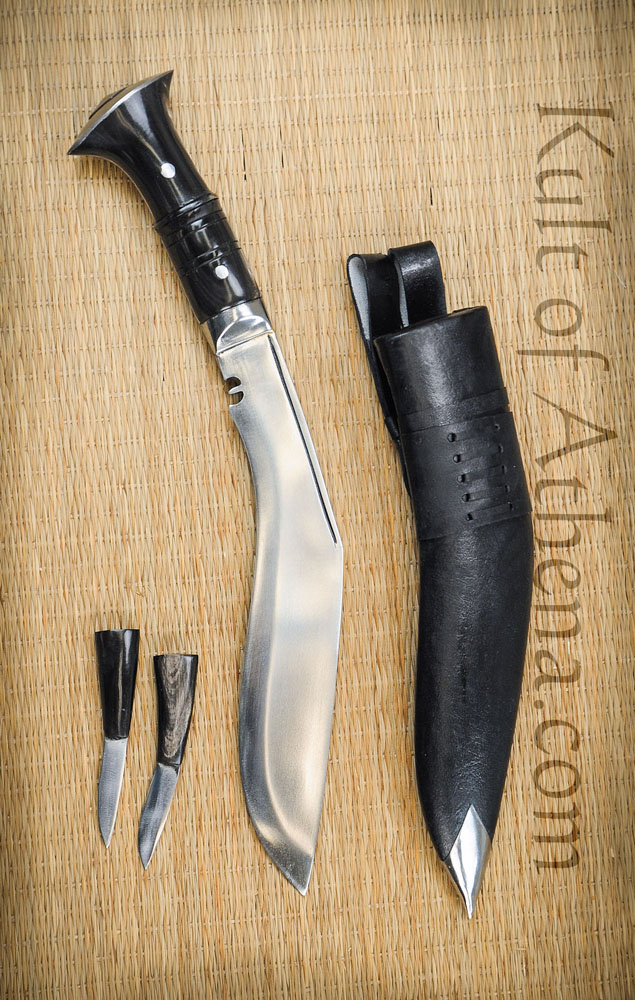
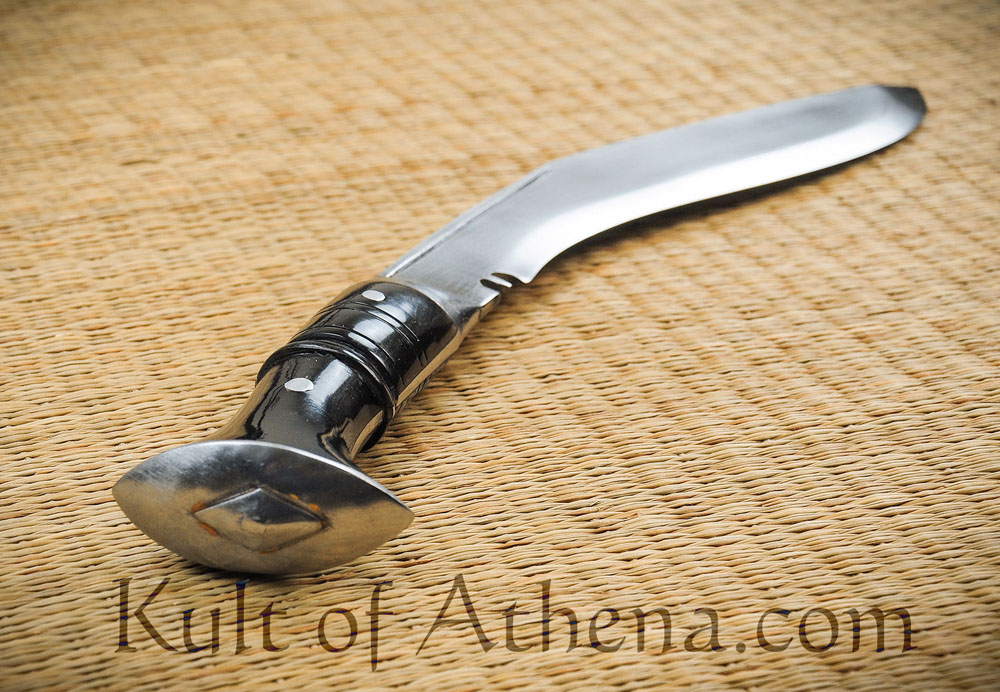
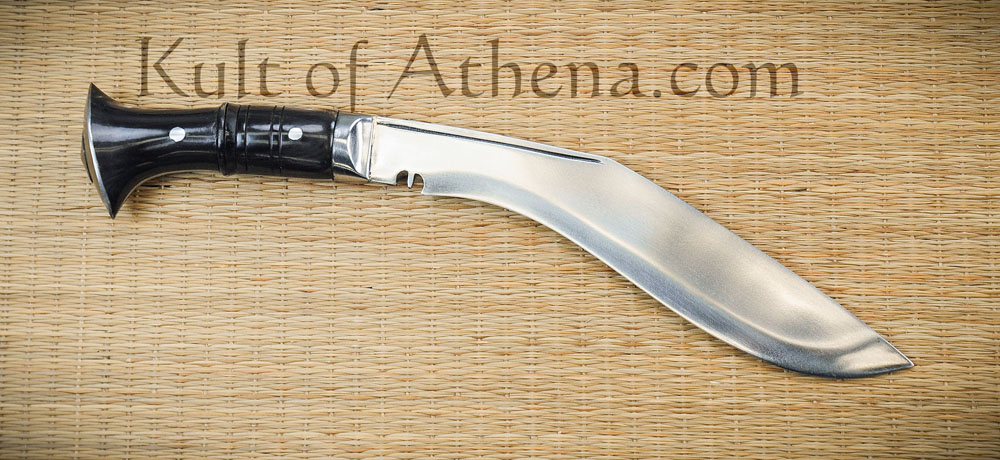
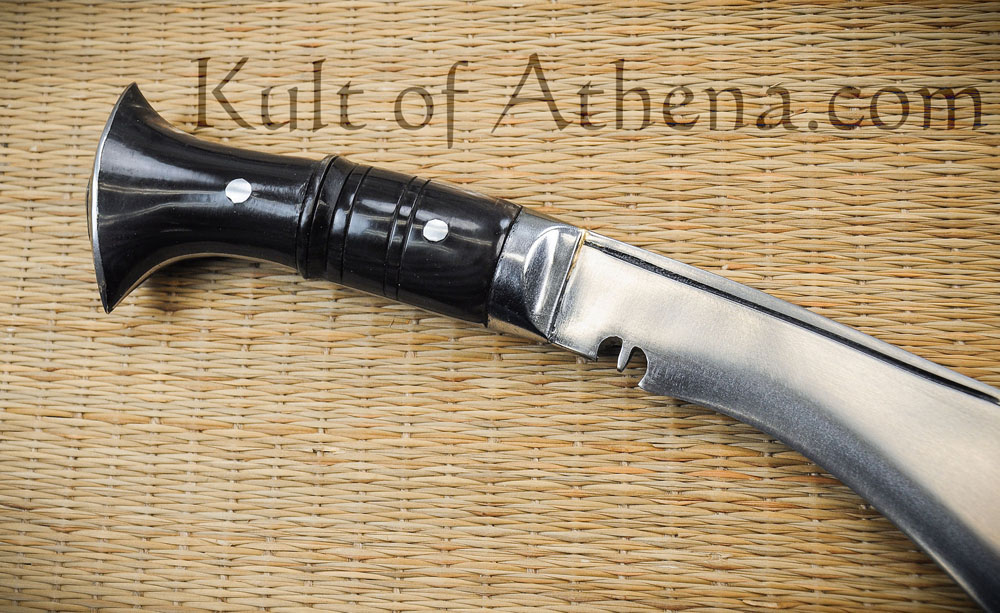
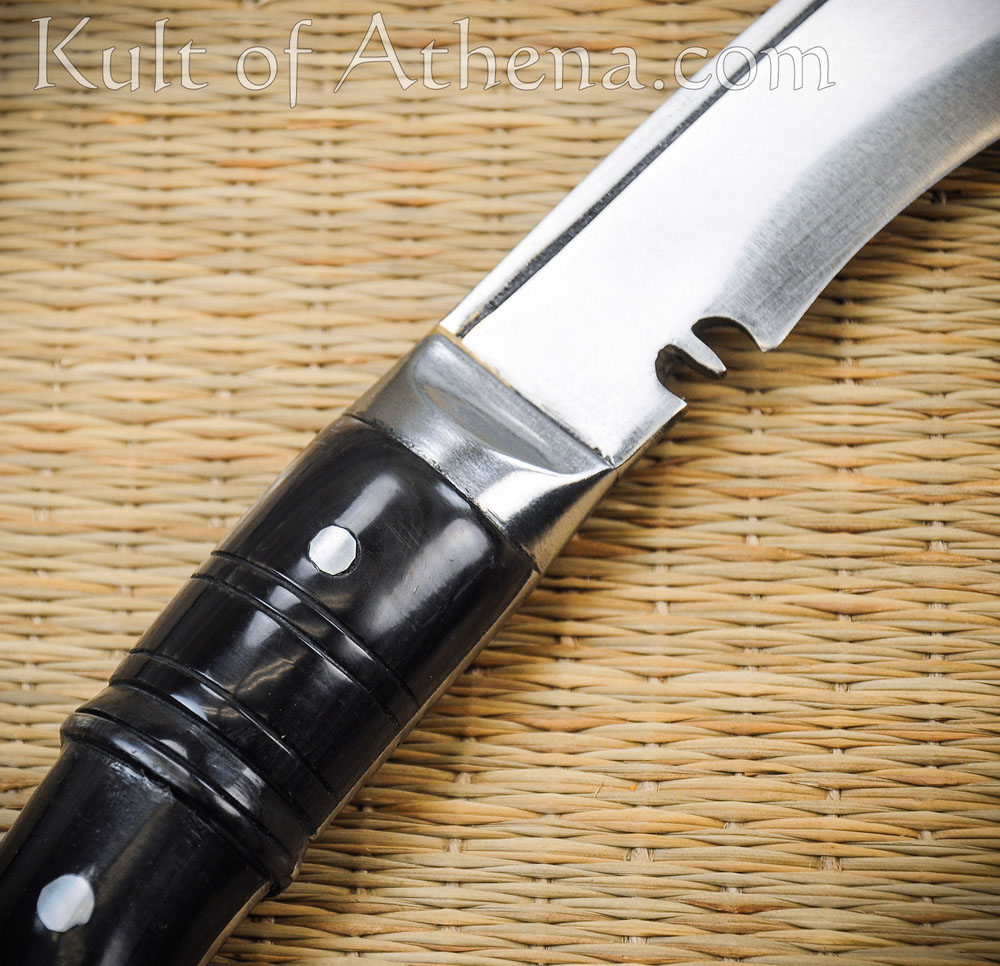
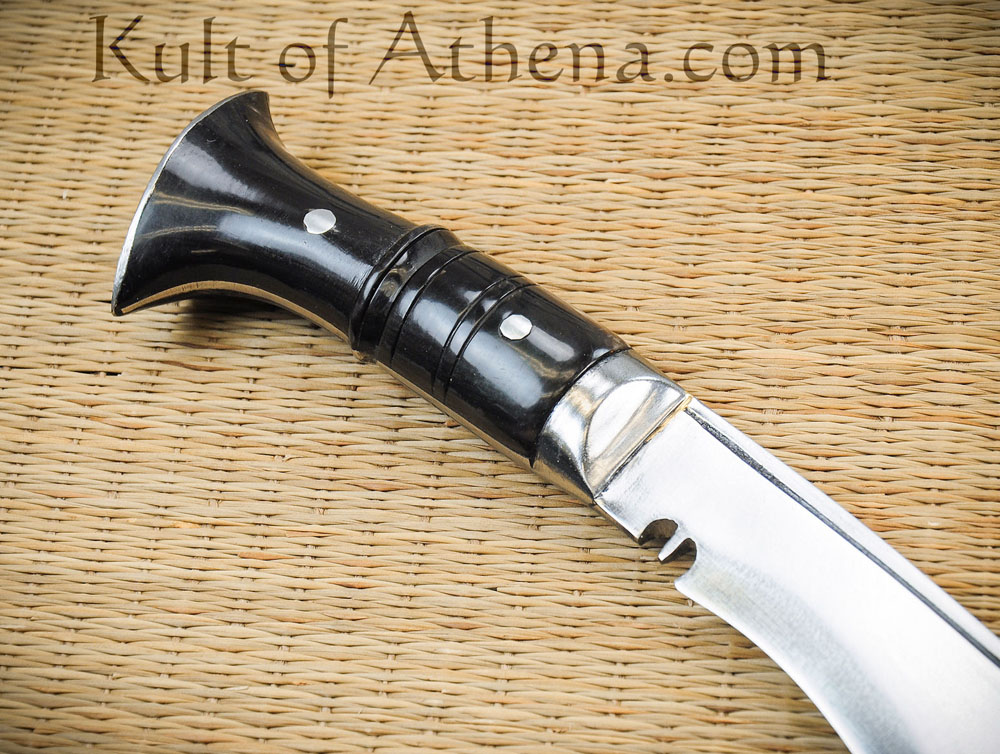
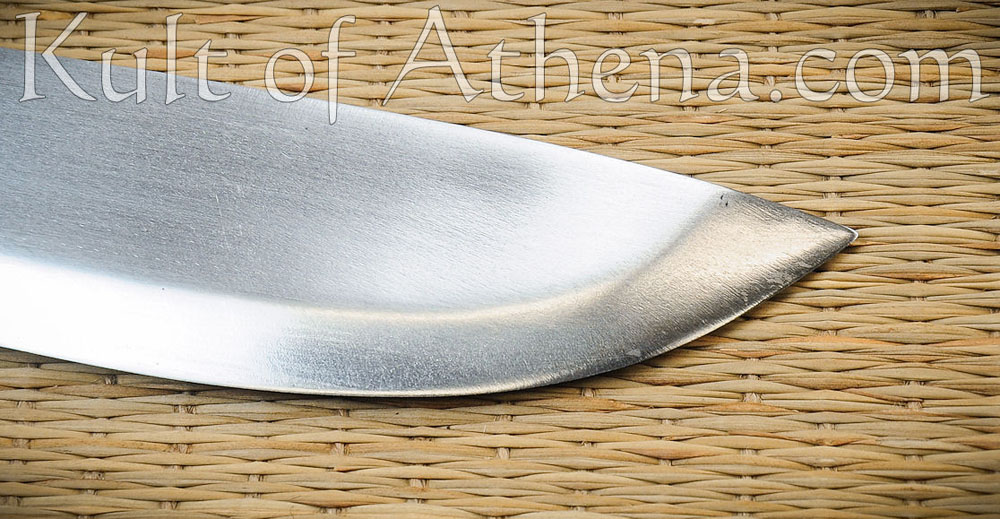
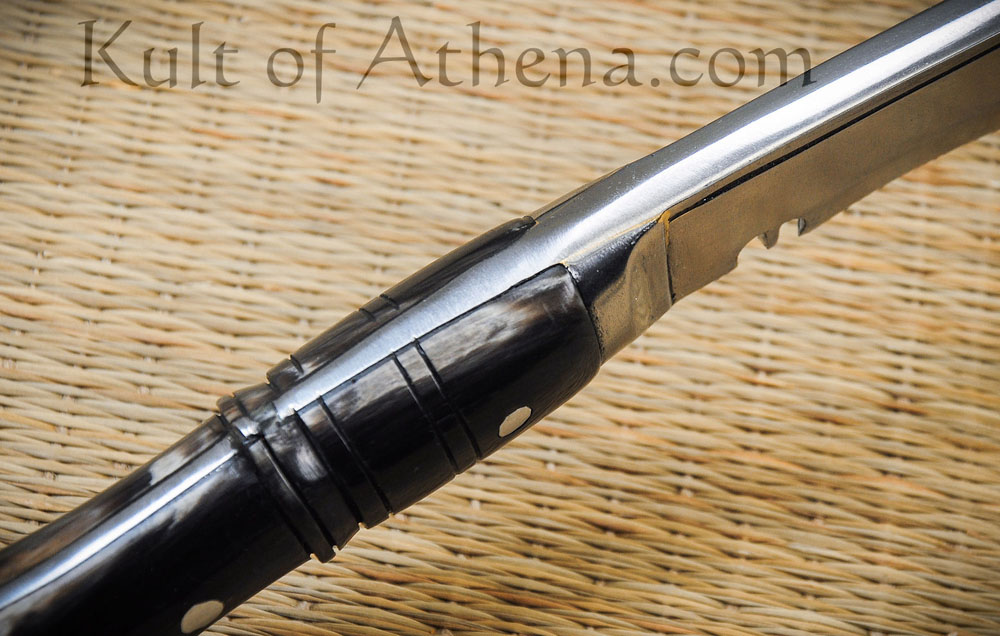
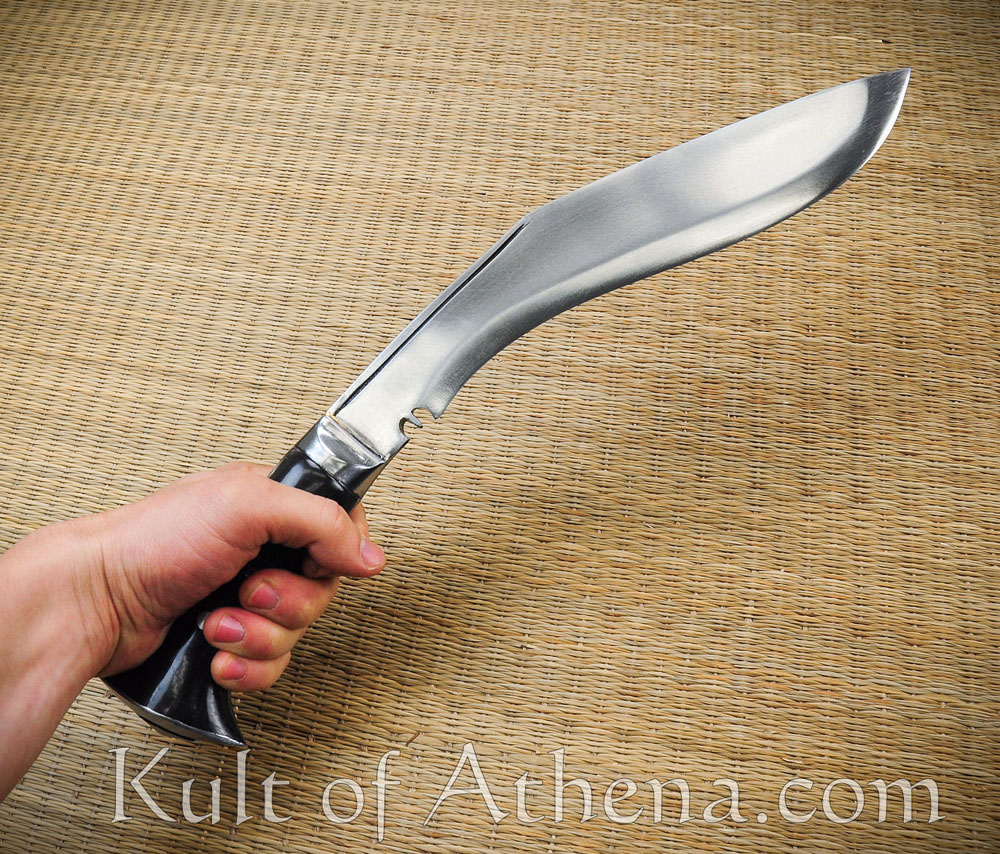
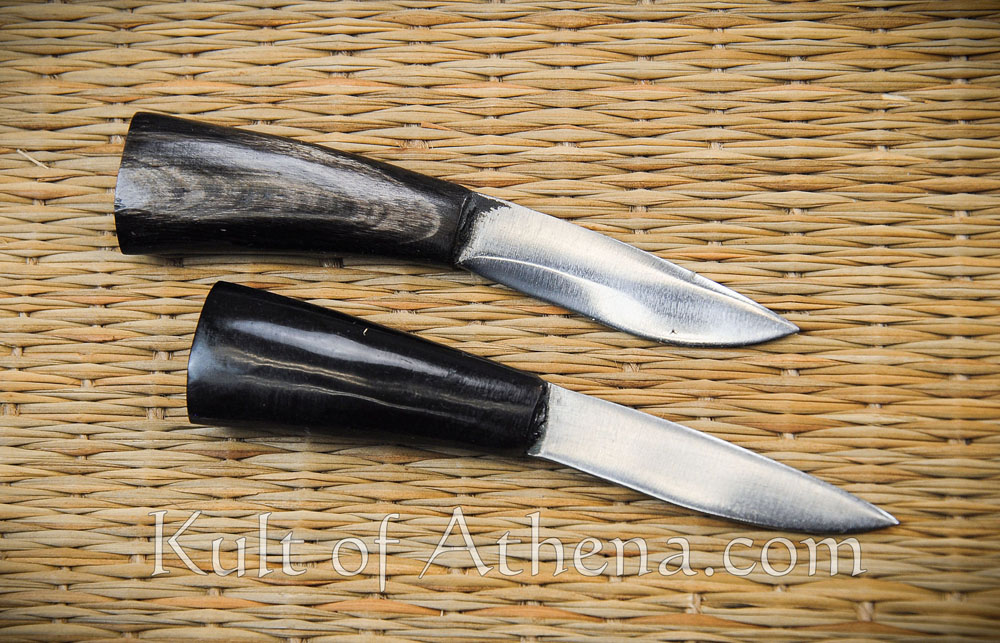
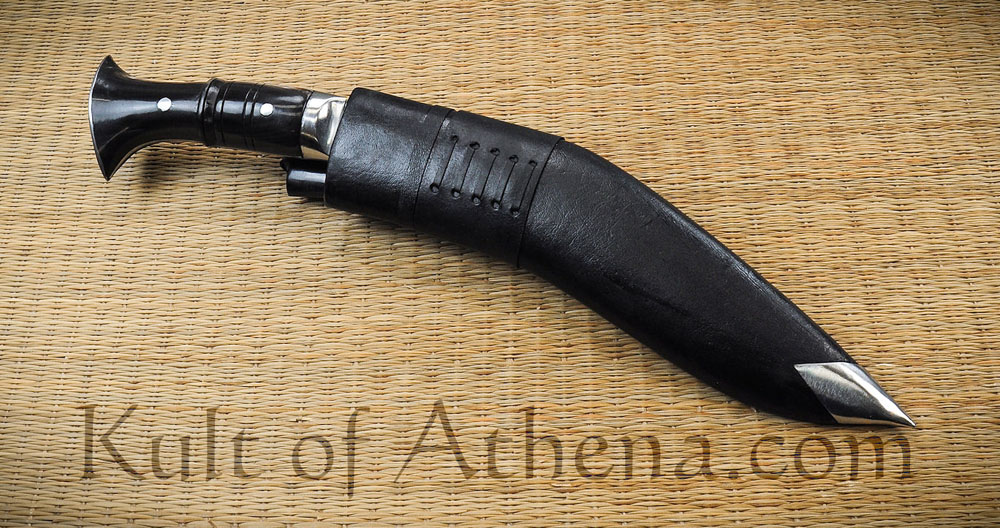
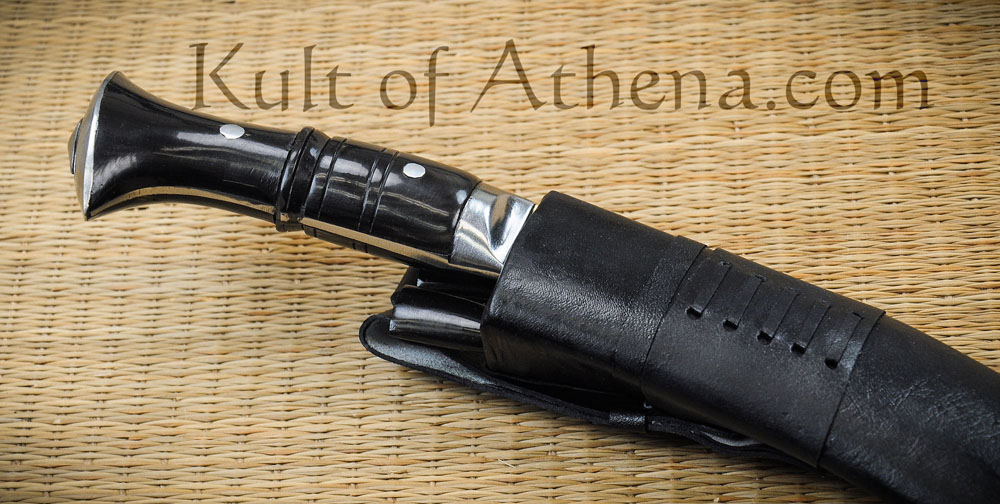


faultroy –
Full Tang Service Nom1 Khukuri I recently received this Khukuri and noted its weight at just about 25 oz. I am using this knife as a survival knife for outdoor applications. The spine of the blade is at least 3/8ths inch thick, and came pretty sharp. I started cutting some dead maple trees to see how well it cut, and how well the edge would hold up. After spending 45 minutes cutting wood from a one inch diameter thickness to a 4 inch diameter thickness, I noted that the edge had not rolled, and it had an excellent heat treat. The blade was very well put together and the fitting between the Buffalo Horn scales was fitted better than the one pictured on This site. This is a full tang blade with what appears to be a polished silver horn cap. It’s weakness will be that eventually, the Buffalo horn will probably crack with hard usage. In addition, I had some trouble with the pointed horn cap which bit into the meat of my palm. All in all, an excellent value.
KE –
EGKH Service No. 1, 10 inch- first impressions I’ve been looking for a replacement in my bugout bag that would replace the machete, knife, and hatchet, and the Khukuri seemed the way to go. After a fair bit of research I’ve heard that EGKH was a good compromise between price and quality, so I took the plunge and bought this blade. Why 10 inch? Because I bloody well can.
The blade arrived in a timely manner. The blade had two brown/rust spots, but that’s to be expected from so large an outfit like KoA, and not a huge deal. Some sandpaper and a healthy coating of RemOil made the knife shine like new.
The blade is thick and heavy- a couple of swings made me think more of a hatchet than a knife, but then for my purposes it’s not that bad- I’ll probably be using it for firewood or brush clearing, not combat. The blade is claimed to be made from old truck/car springs in Nepal, but that seems unverifiable- not that it really matters. It’s shiny, carbon, and sharrrrrrrrrrrrrrrp. Really sharp, actually. Do be careful.
The handle is made of buffalo horn, and looks like it was ground down to make fit the tang. It felt solid and could take some hits, which was great. Like a similar reviewer said, it will probably crack with usage.
The khukuri came with two small blades, the chakmak and karda- they seem to made of the same kind of steel. The karda is a small utility blade that accompanies the khukuri, and the chakmak is an unsharpened piece of steel used to hone the edges of the other two blades after use. Both have buffalo water horn for handles. Both of these piece fit in the sheath between the khukuri and the beltloops.
The sheath itself looks and feels great- no loose leather, good fitting ornaments, and tight fits for the blades. It is some kind of wood (native to Nepal, one might surmise) overlaid with covering. The whole ordeal feels good, and it’s not cheaply made. The construction of this sheath is good for the khukuri- long term storage of this blade would be affected by wood as it would leather- you could but a healthy layer of oil on the blade and store it away- you couldnt do that with a leather sheath.
Overall, I really like this knife- it fits well in the palm, is not cheaply made, and is very substantial. I’ve read that EGKH works are often lumped in the ‘tourist khukuris’ category, but to be honest, that labeling seems trivial- the Service No. 1 khukuri is a great knife in its own right.
If you buy it, keep it oiled and sharp- the heritage of this tool demands as such.
Overall, I’d whole-heartily recommend it- it’s strong enough to be a part of your tool kit, yet unique enough to show off to your buds.
9/10 would brave the apocalypse with this beastly knife